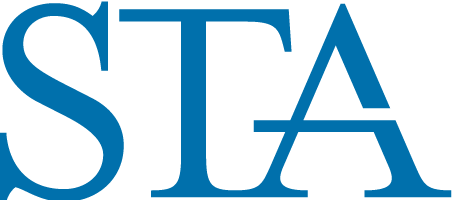testing this out testing this out testing this out testing this out testing this out testing this out testing this out testing this out testing this out testing this out testing this out testing this out testing this out testing this out testing this out testing this out testing this out testing this out testing this out testing this out testing this out testing this out testing this out testing this out testing this out testing this out
Discussion Document – March 2019
Who We Are
STA is comprised of 24 affiliate organizations covering the entire US and Canada. The STA national board of governors is comprised of past presidents and industry specific leaders. Our membership represents INDIVIDUALS from varying business models – buy-side, sell-side, hedge funds, exchange traders and market makers- dealing in equity and derivative trading
SEC Rule 606 – Requests for Guidance
*As with any large scale industry project, regulatory guidance prior to implementation is often needed. As the May 20th compliance date approaches the industry seeks SEC guidance on a range of areas, including but not limited to: options calculations & reporting on amended 606(a); definition of actionable IOIs under amended Rule 606; challenges for introducing BDs.
SEC Transaction Fee Pilot for NMS Securities – Spreads and Canadian Securities Administrator
*STA believes that the impact access fees have on our market structure has evolved since they were originally allowed and then capped. We therefore support a study that includes a pilot.
*STA also appreciates that the Commission, in its final decision, responded to remarks in STA’s letter which recommended reducing the number of securities in the pilot as a means to provide protections in the event that the pilot widens spreads in securities, and coordinating efforts with the Canadian Securities Administrator.
SEC no-action letter under the Investment Advisers Act of 1940 on MiFID II
*STA believes that a meaningful number of market participants anticipate the Commission granting an extension and/or expansion on the existing “no-action” relief. A decision to allow the relief to expire in July 2020 risks to be highly disruptive if firms are not provided adequate time to adjust to the regulatory regime.
*Expiration would have a particular impact on those broker-dealers who may decide to register their research departments as investment advisers to accommodate cash payments. *Additionally, we believe that the demands on SEC resources to process an initial influx of RIA registrations and to facilitate ongoing audit and supervision reporting would be meaningful.
FINRA Working Paper: High Broker-Affiliated ATS Order Routing Associated with Lower Fill Rates, Higher Costs
*STA looks forward to being a conduit for industry input until the paper takes it final form.
Exchange Traded Products (ETPs)
*In 2018 STA established an ETF Working Group partially in response to ETF participants’ willingness and desire to be part of larger and broader equity market structure conversations.
*Some initial areas of focus include: Allowing flexibility on creation/redemption unit sizes and SEC’s Transaction Fee Pilot;
*Proposed New Rule 6c-11 (ETF Rule) – Updates and Discussion
• Disclosure of Bid-Ask Spread Information
• Canadian “ETF Facts” Disclosure Requirements
Thinly Traded Securities – UTP
*It remains STA’s view that shareholders of small to mid-size securities which lack a robust secondary market benefit from the presence of market makers and block traders who can, among other things, provide enhanced liquidity to increase the depth of the market. While the factors in enhanced liquidity provision are numerous, there are certain core ones which include: quote quality; volatility; and reduction in costs.
*While STA understands and appreciates that the goal of suspending UTP is to enable “innovative market structure solutions” we still have concerns regarding a venture or thinly traded exchange regime which allows for the suspension of UTP as part of its construct.
Market Data & Market Access: Core Data – Order Protection Rule (OPR) & Best Execution
*STA looks forward to engaging the SEC as it reviews Regulation NMS. While we do not call for a wholesale revision or rollback, we believe there are certain areas which need to be revisited for their effectiveness in today’s market structure.
*STA is currently reviewing its opinion of the OPR which was last expressed in our May 2008 Special Report:
“STA is of the opinion that a marketplace without this order protection rule will be superior to enforcing the current OPR… While the OPR was well intended, its many complex exemptions complicate compliance and dilute its effectiveness… The STA believes that the elimination of the OPR contained in Regulation NMS will allow for superior executions and will positively impact displayed liquidity.”
Combatting Retail Fraud – Rule 15c2-11
*The SEC has explored eliminating the piggyback exemption and requiring broker-dealers to periodically update 15c2-11 materials (proposals in 1991, 1998 and 1999).
*Costs to broker dealers to maintain 15c2-11 materials are meaningful and the inability to recoup them (FINRA Rule 6432) disincentivizes broker-dealers from providing public pricing and liquidity services, ultimately resulting in less, not more, public information available about small cap issuers.
- There are workable solutions to achieve the underlying purpose of the rule: to prevent and deter microcap fraud, particularly involving issuers for which public information is limited.
• Rule 15c2-11 materials should be made public and issuers should be liable for any misrepresentations contained in these materials.
• Trading venues that make that information publicly available, and indicate when the information is current, should be permitted to file Form 211 with FINRA.
• For securities of issuers that have not made current information available for a defined period of time, the SEC may want to explore limiting trading to sophisticated investors with a high risk tolerance.
PDF version here
